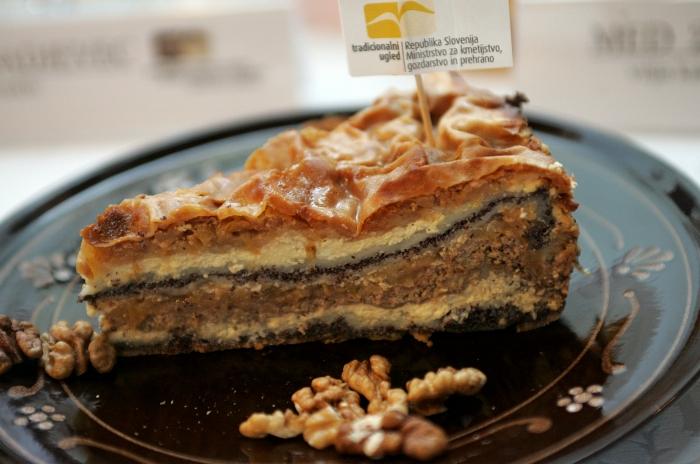
Slovenian cuisine is known for its great diversity, and in recent years, many parts of Slovenia have been rediscovering their traditional dishes. One dessert from the region of Prekmurje on the border with Hungary has become one of Slovenia’s most recognizable culinary brands.
The origins of the Prekmurje layer cake, known in Slovenian as “prekmurska gibanica,” are uncertain. What is known is that the recipe for gibanica, long known to local women, was first mentioned in an 1828 cookbook written by a local priest. Back then, the cake was considered a special delicacy that was most frequently eaten at wedding ceremonies.
The fillings used to make gibanica cake varied through the years. Even cabbage was commonly used at one point. Today, recipes almost invariably call for layers of ricotta, poppy seeds, diced apples, and walnuts, all separated by layers of filo dough similar to that used for strudels.
The recipes for gibanica were passed down from generation to generation, but after Slovenia’s independence, enthusiasts began to call for official recognition of the dish. In 2004, an association established for the promotion of local delicacies persuaded the Slovenian government to officially recognize gibanica as a unique local dish. Six years later, the dessert received similar protection of the European level, meaning that any dish marketed as “prekmurska gibanica” must conform to the recipe that had been developed over the centuries in Prekmurje.
As a typically Slovenian dessert, gibanica has joined a select group of other delicacies – including several kinds of cheese, Teran wine, and the prized Karst prosciutto – and has become a culinary trademark of the country. Now prepared by restaurants across Slovenia, it is increasingly used to promote the diversity and the richness of Slovenian cuisine at events far beyond the country’s borders. To many foreigners, it serves as an introduction to the centuries-old heritage of Slovenian country cooking.

































































